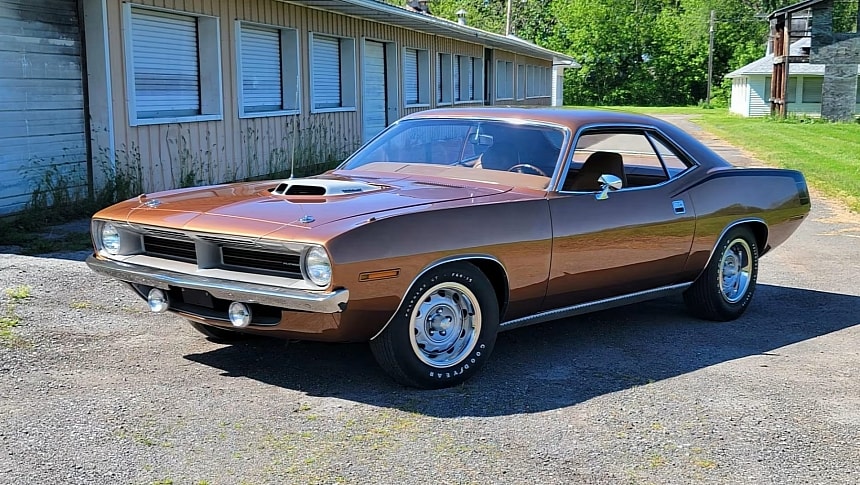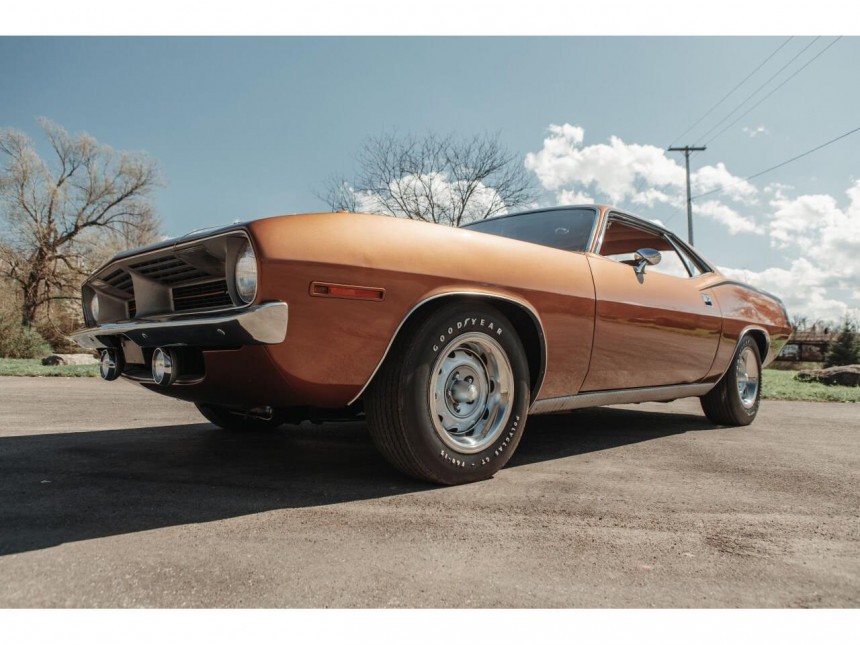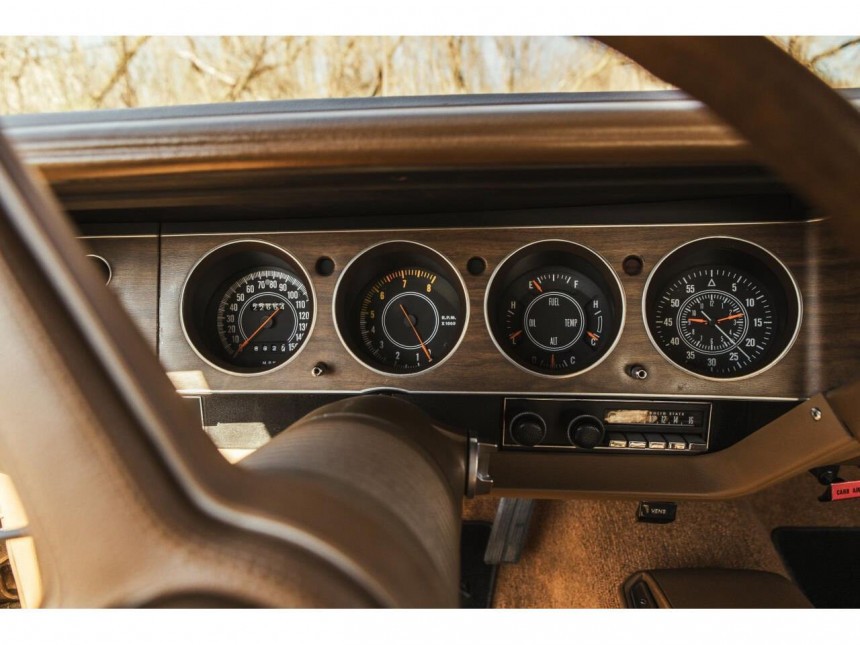In 1970, when Plymouth’s reworked Barracuda came around in its third (and final) generation, no one foresaw the status some of those cars would attain after a few decades of aging. The most dramatic transformations occurred with the Hemi-powered units since the fabled motor and the iconic E-body design had a short two-year marriage. Today, a ‘hemicuda’ is worth millions (literally, in certain ragtop instances), and hunting down a survivor is not for shallow pockets.
Ironically, exactly 666 Plymouth Barracudas received the 426 cubic-inch eight-cylinder motor in 1970, the first year when the mighty seven-liter elephant roared its 425-hp, 490-lb-ft (431 PS, 664 Nm) might from underneath the hood of a ‘Cuda. The nameplate saw the light of day on April 1, 1964, as the first settler on what was soon to become the pony car territory, thanks to Ford’s all-new Mustang.
However, unlike the Blue Oval car, the Barracuda was too small to carry the two symbolic V8 big-blocks from Chrysler, the 440 and the Hemi. Mother Mopar waited (so long) for two generations before finally making the required changes. Finally, for the 1970 model year, the last Barracuda came out completely new, bearing no similarities to its past. It was, however, bearing the magical motor, the Hemi (albeit only in small numbers).
At the end of 1971, the mythical engine was scrapped – ChryCo didn’t need the monstrous output interfering with emissions regulations, nor did it have any particular interest in seeing insurance premiums scare off buyers. With the ever-tighter federal mandates on tailpipe pollution, the Hemi became obsolete. Simultaneously, the government felt like too much horsepower was something of a cash cow and started milking the smokin’ tire out of hotheaded gearheads.
Out of the 666 Plymouth Barracuda 426 Hemi examples assembled for 1970, 652 were hard-tops – as in, they weren’t soft-tops but had a hard top over the greenhouse. Formally, they were known as coupes and were segregated into two major groups: the automatics (consisting of 368 vehicles) and the four-speeds (284 units).
Unfortunately, due to Chrysler's lack of further historical records, more detailed breakdowns are not easily available (or simply do not exist). There is, however, a private registry that keeps track of them, and this is one way to learn about the particularities of a rare car.
For example, how many Burnt Tan hemicudas were assembled for the 1970 model year production run? According to the registry, just four out of the 262 listed in the archives at the time (in 2001) have been documented to have had this factory paint applied.
Also, only ten came with power windows – and combining the two options (livery and electric windows) is enough reason to push the price of a 1970 Plymouth ‘Cuda 426 Hemi above the $200,000 mark. Have a look at the car in the gallery or see it in person in two months’ time in Harrisburg, Pennsylvania.
The rarity will cross the auction block on July 27 in search of a new owner. The odometer reads 22,654 miles (36,458 kilometers), but something is missing from the big picture. The listing itself isn’t very generous in details about the car’s past, other than the three broadcast sheets mentioned and two photos.
However, a brief background check on the car’s VIN revealed that it was sold 16 years ago at the Scottsdale, Arizona, car show (for $165,000). Notably, the seller claimed the 21,500 miles on the clock were original (34,601 kilometers). That would imply that this car is a garage queen, with a little over 1,100 miles (1,770 km) traveled since.
In November 2022, the same car was put up for sale on eBay for a hefty Buy It Now price of $180,000, and it was at that moment, some hardcore Mopar fans took notice of several inconsistencies. First and foremost, the door sticker, on which the hemispherical heads society called ‘foul play.’ See the photo above this paragraph for a comparison between a 54-year-old decal and a reproduction, as posted on the E-bodies forum at the time.
Secondly, that eBay ad also mentioned a partial repaint performed in 2015. It saw the engine bay and hood coated with a fresh layer of the Burnt Tan livery and the 426 itself (the motor was resprayed in its correct Hemi Orange hue). The engine is said to be the original plant, and there are seven arguments in favor of the ‘matching numbers’ plea.
The dash VIN, the primary body code on the radiator support, the secondary body code on the cowl, the fender tag, the engine block stamping, the oil pan stamping of the engine casting number, the transmission VIN stamping, and the aforementioned sticker on the driver's door.
Until the summer auction in Pennsylvania, the car will be offered for sale in Hilton, New York. The asking price is $225,000, which is well within the range for which these cars usually trade, considering the claimed originality and low mileage.
However, unlike the Blue Oval car, the Barracuda was too small to carry the two symbolic V8 big-blocks from Chrysler, the 440 and the Hemi. Mother Mopar waited (so long) for two generations before finally making the required changes. Finally, for the 1970 model year, the last Barracuda came out completely new, bearing no similarities to its past. It was, however, bearing the magical motor, the Hemi (albeit only in small numbers).
At the end of 1971, the mythical engine was scrapped – ChryCo didn’t need the monstrous output interfering with emissions regulations, nor did it have any particular interest in seeing insurance premiums scare off buyers. With the ever-tighter federal mandates on tailpipe pollution, the Hemi became obsolete. Simultaneously, the government felt like too much horsepower was something of a cash cow and started milking the smokin’ tire out of hotheaded gearheads.
Unfortunately, due to Chrysler's lack of further historical records, more detailed breakdowns are not easily available (or simply do not exist). There is, however, a private registry that keeps track of them, and this is one way to learn about the particularities of a rare car.
For example, how many Burnt Tan hemicudas were assembled for the 1970 model year production run? According to the registry, just four out of the 262 listed in the archives at the time (in 2001) have been documented to have had this factory paint applied.
The rarity will cross the auction block on July 27 in search of a new owner. The odometer reads 22,654 miles (36,458 kilometers), but something is missing from the big picture. The listing itself isn’t very generous in details about the car’s past, other than the three broadcast sheets mentioned and two photos.
However, a brief background check on the car’s VIN revealed that it was sold 16 years ago at the Scottsdale, Arizona, car show (for $165,000). Notably, the seller claimed the 21,500 miles on the clock were original (34,601 kilometers). That would imply that this car is a garage queen, with a little over 1,100 miles (1,770 km) traveled since.
Secondly, that eBay ad also mentioned a partial repaint performed in 2015. It saw the engine bay and hood coated with a fresh layer of the Burnt Tan livery and the 426 itself (the motor was resprayed in its correct Hemi Orange hue). The engine is said to be the original plant, and there are seven arguments in favor of the ‘matching numbers’ plea.
The dash VIN, the primary body code on the radiator support, the secondary body code on the cowl, the fender tag, the engine block stamping, the oil pan stamping of the engine casting number, the transmission VIN stamping, and the aforementioned sticker on the driver's door.
Until the summer auction in Pennsylvania, the car will be offered for sale in Hilton, New York. The asking price is $225,000, which is well within the range for which these cars usually trade, considering the claimed originality and low mileage.




















































